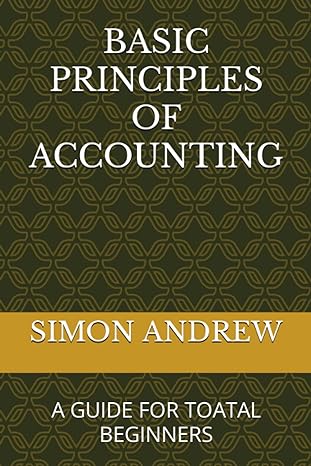Answered step by step
Verified Expert Solution
Question
1 Approved Answer
Rock Solid Bank and Trust (RSB&T) offers only checking accounts. Customers can write checks and use a network of automated teller machines. RSB&T earns revenue
Rock Solid Bank and Trust (RSB&T) offers only checking accounts. Customers can write checks and use a network of automated teller machines. RSB&T earns revenue by investing the money deposited; currently, it averages 6.60 percent annually on its investments of those deposits. To compete with larger banks, RSB&T pays depositors 0.50 percent on all deposits. A recent study classified the bank's annual operating costs into four activities. Activity Using ATM Visiting branch Processing transaction Managing functions Total overhead Cost Driver Number of uses Cost $ 3,600,000 Driver Volume 4,800,000 uses Number of visits. 2,160,000 Number of transactions 15,840,000 Total deposits Data on two representative customers follow. Customer A Customer B 360,000 visits 192,000,000 transactions 14,400,000 $900,000,000 in deposits $36,000,000 ATM uses Branch visits 100 5 200 Number of transactions 40 Average deposit $6,000 20 1,500 $6,000 Required: a. Compute RSB&T's operating profits. b. Compute the profit from Customer A and Customer B, assuming that customer costs are based only on deposits. Interest costs = 0.50 percent of deposits; operating costs are 4 percent (= $36,000,000/$900,000,000) of deposits. c. Compute the profit from Customer A and Customer B, assuming that customer costs are computed using the information in the activity-based costing analysis. Complete this question by entering your answers in the tabs below. Required A Required B Required C Compute RSB&T's operating profits. Operating profit Required A Required B Required C Compute the profit from Customer A and Customer B, assuming that customer costs are based only on deposits. Interest costs = {{0.5: #,##0.00}} percent of deposits; operating costs are 4 percent (= $36,000,000/$900,000,000) of deposits. (Do not round intermediate calculations. Round your answers to 2 decimal places.) Customer A Customer B Profit Per Customer Compute the profit from Customer A and Customer B, assuming that customer costs are computed using the information in the activity-based costing analysis. (Do not round intermediate calculations. Round your answers to 2 decimal places. Loss amounts should be indicated by a minus sign.) Sales revenue Interest on deposit Total operating cost Customer profit/loss Customer A Customer B
Step by Step Solution
There are 3 Steps involved in it
Step: 1

Get Instant Access to Expert-Tailored Solutions
See step-by-step solutions with expert insights and AI powered tools for academic success
Step: 2

Step: 3

Ace Your Homework with AI
Get the answers you need in no time with our AI-driven, step-by-step assistance
Get Started


